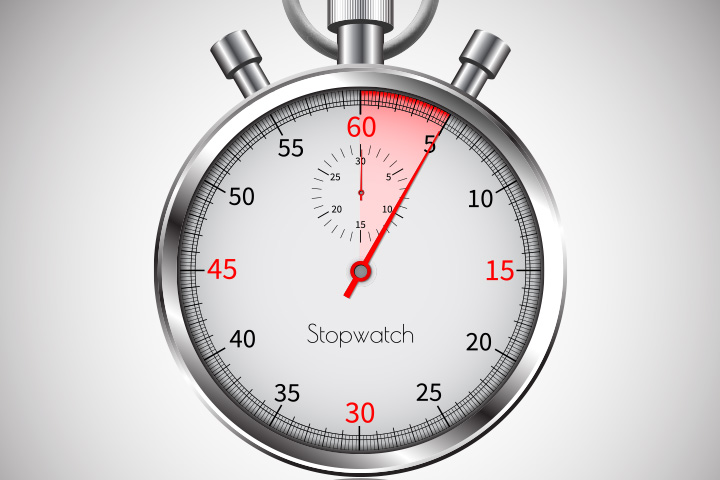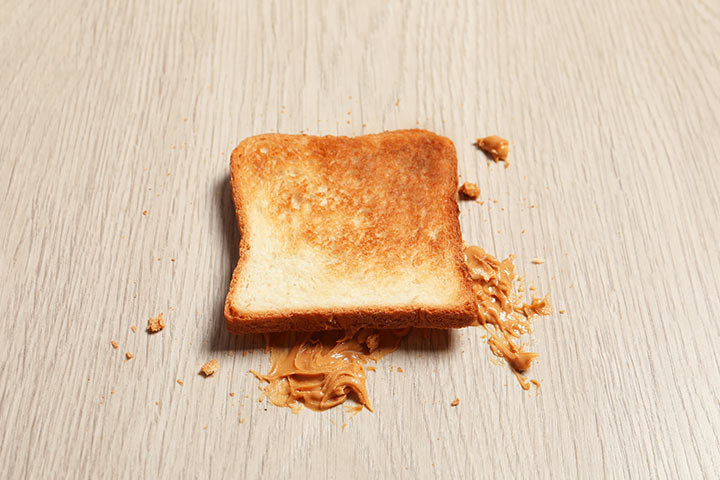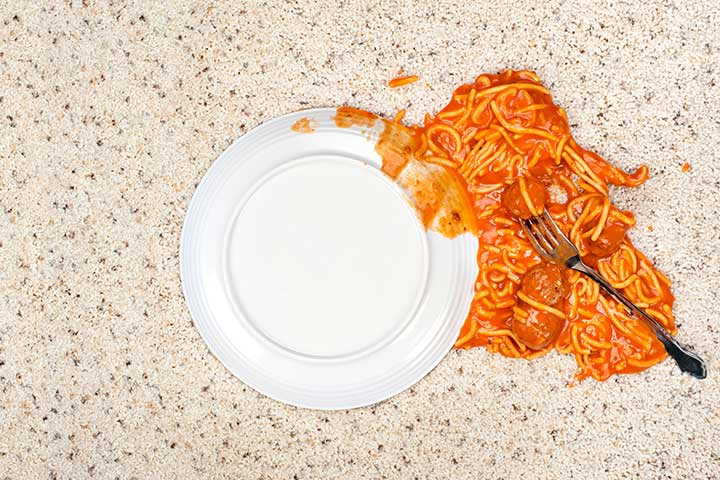
Image: Shutterstock
Picture this: You are walking around holding your favorite club sandwich. You slip and your sandwich is now lying on the floor. You instantly pick it up and sneak it into your mouth. How many of us can relate to doing something similar at least once in our lifetime (or more!)? We are all guilty of sneakily picking up the food we dropped on the floor. Unless, of course, the floor is really dirty and you have no choice than to throw it away no matter how much you wanted to have it. We always tend to take the risk of getting food poisoning if the food looks clean. And some people go by the 5-second rule hoping that it’s safe to eat it off the floor under certain conditions.
What Is The 5-second Rule?
According to the age-old principle, if you have dropped food on the floor, you can eat it if it’s picked up within 5 seconds.
Now, let’s be honest here, I’m sure some of us didn’t do it because of the 5-second rule. But those of us who have heard about the 5-second rule, the scientists have actually shed some light on the subject.
Here’s What The Experts Say
Just because it’s a famous rule, it doesn’t make it true, according to some experts (1). Rachel Williams, who is the spokesperson for Food Safety Information Council says that it’s actually not true, and they would not recommend following the rule. So, even if you pick a piece of cheese from the floor within 5 seconds, chances are that it can make you sick.
A 2003 survey done at the University of Illinois found that candies which were dropped on the floor containing the bacteria E Coli took less than 5 seconds to be transferred to the food.
Another experiment was conducted at Clemson University in South Carolina by professor Paul Dawson. In the experiment, different surfaces were contaminated with nasty bacteria that can cause food poisoning. It was found that the bacteria transferred to the dropped food on the surface in less than 5 seconds.
Is It The Same For All Foods?
A 2016 study states that food gets more contaminated the longer you leave it on the floor (2). If you drop a piece of food on the floor, it gets contaminated instantly. So food isn’t considered to be safe if it’s within the 5-second window.
However, it further revealed that certain foods cling more number of bacteria than others. If you think about it, a glob of peanut butter or a piece of banana will attract more bacteria than dry foods such as a bread toast or cookies. So, think twice before picking up and eating wet foods off the floor. It was also found that the texture of the floor also has an impact on the bacteria picked up by the food. Tiles or stainless steel are more likely to be contaminated with bacteria than carpeted floors.
According to the Canadian Food Inspection Agency (CFIA), 4 million Canadians are affected by food poisoning every year (3). Out of the 11,500 who are hospitalized, over 230 people die from food poisoning.
Regardless of the kind of food or the type of floor, you can never be sure that there aren’t any traces of contamination. Shoes were found to be one of the major factors of spreading bacteria between floors. It was also found that 93% of shoes which was worn for more than 3 months had traces of fecal matter in them.
Now we just have one question for you, if you knew your favorite cheesecake picked up fecal matter, would you like to eat it?















